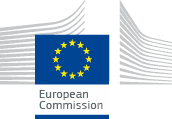Methodology summary
The MEErP methodology (Methodology for Ecodesign of Energy-related Products) allows the evaluation of whether and to which extent various energy-related products fulfil the criteria established by the ErP Directive for which implementing measures might be considered. The MEErP model translates product specific information, covering all stages of the life of the product, into environmental impacts.
The tasks in the MEErP entail (also see figure below):
- Task 1 - Scope (definitions, standards and legislation);
- Task 2 – Markets (volumes and prices);
- Task 3 – Users (product demand side);
- Task 4 - Technologies (product supply side, includes both Best Available Technology and Best Not yet Available Technology);
- Task 5 – Environment & Economics (base case Life Cycle Assessment & Life Cycle Costs);
- Task 6 – Design options (improvement potential);
- Task 7 – Scenarios (policy, scenario, impact and sensitivity analysis).
Tasks 1 to 4 can be performed in parallel, whereas 5, 6 and 7 are sequential. Task 0 or a quick scan is optional to Task 1 for the case of large or inhomogeneous product groups, where it is recommended to carry out a first product screening. The objective of the quick scan is to re-group or narrow the product scope, as appropriate from an ecodesign point of view, for the subsequent analysis in tasks 2-7. More information on the MEErP can be found on this website.

FAQ
The section below discusses some important elements of the tasks of the study:
- What are Energy-related products as defined in the Ecodesign directive?
- Why should stakeholders be involved?
What are Energy-related products?
Directive 2009/125/EC provides the following definition of energy-related products:
Article 2, item 1: "Energy-related product means any good that has an impact on energy consumption during use, which is placed on the market and/or put into service ...(including parts) ... of which the environmental performance can be assessed independently."
Why should stakeholders be involved?
The European Commission is dedicated in giving stakeholders the opportunity to provide input to this study thereby creating a fully transparent and open process. This website is the main information exchange platform between the study-team, the Commission and the stakeholders.
All (draft) documents will be freely available through this website, but if you register as stakeholder you will receive notifications on website updates. Furthermore, as stakeholder, you can provide direct feedback to draft reports published on this website and make suggestions for energy-related products. Please note that your comments and suggestions may be made public on this website.
When task reports become available, stakeholder meetings will take place. The meeting dates, venues and how to be invited to the meeting will be announced through this website.

